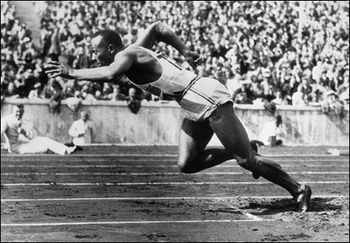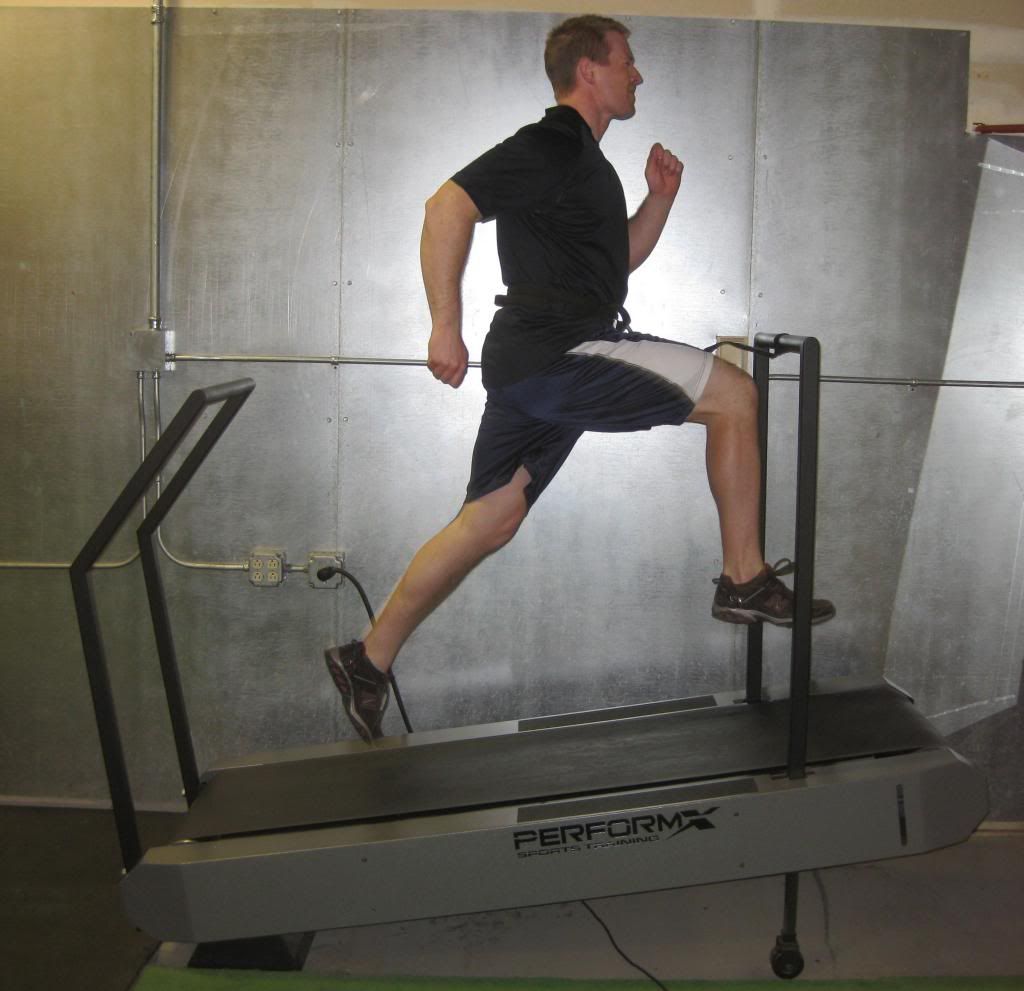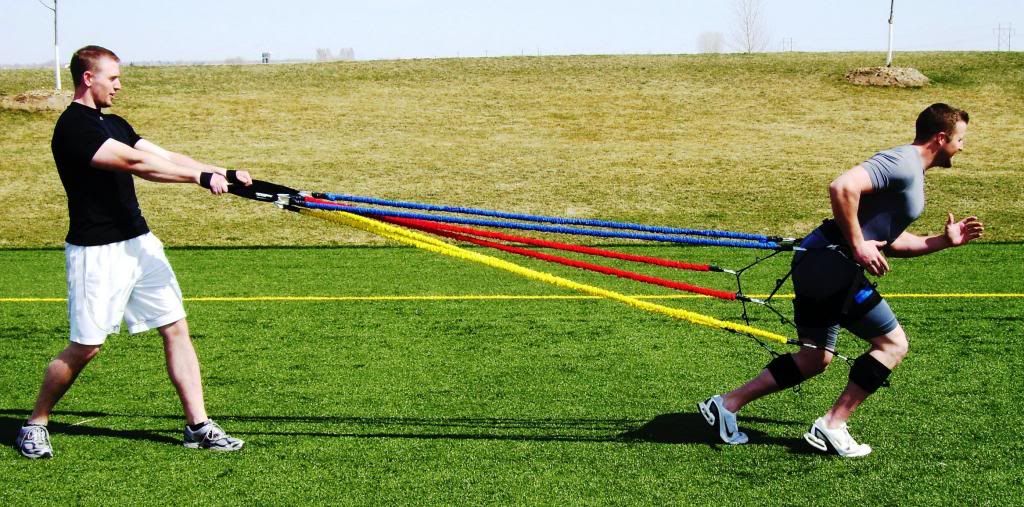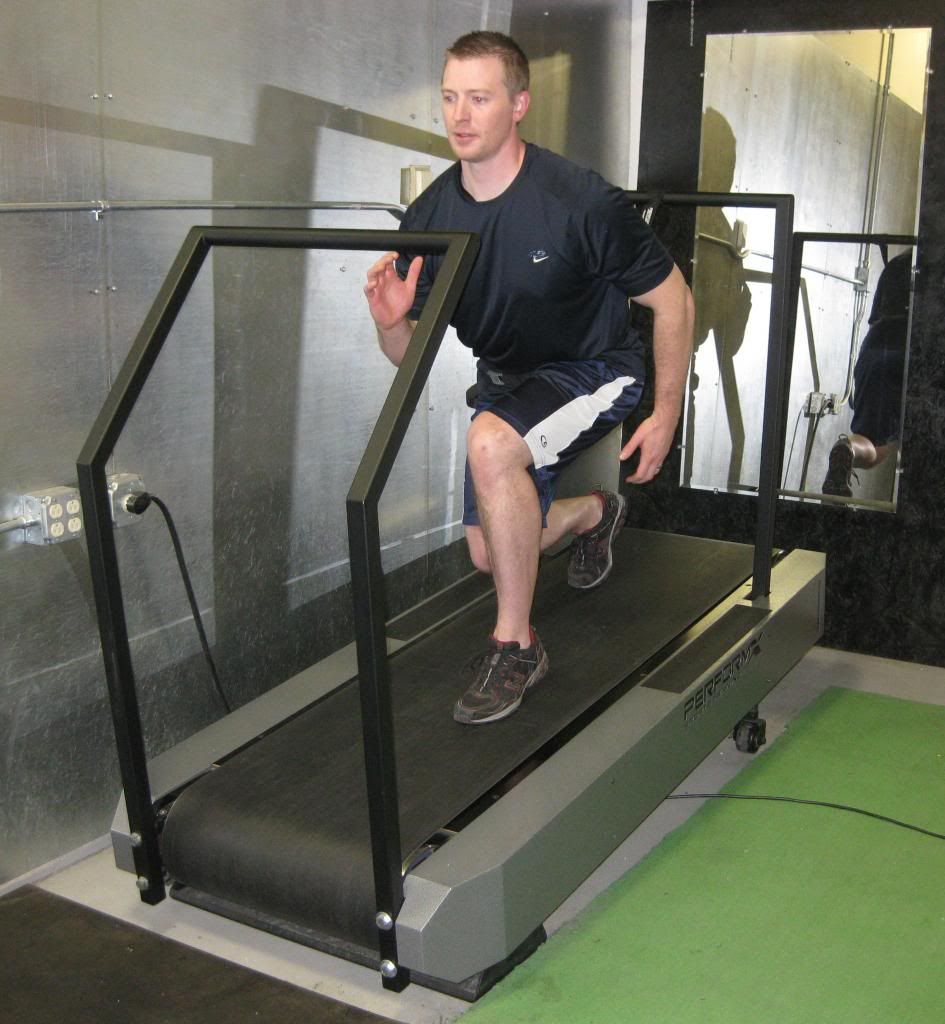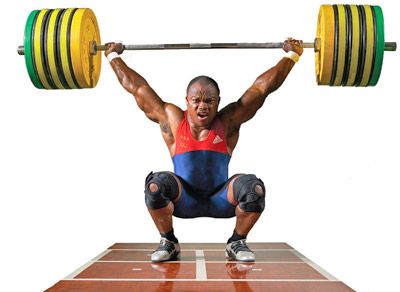Why Sprinters Are Muscular and Endurance Runners Are Thin
Running has been critical for human survival since the dawn of mankind—both for chasing down food and evading threats. Today, at least in the developed world, running has morphed into more of a recreational activity for sport or exercise.
We typically do not associate running with building muscle. We tend to look at it as a way to improve cardiovascular fitness and overall health. However, it’s more complicated than that.
Looking deeper at the adaptations caused by running, we have to consider what type of running is performed and at what intensity. We also need to factor in genetics and how the body morphologically changes with stress.
Sprinting
Sprinters are born with a high number of fast-twitch muscle fibers, which power maximum speed, strength and power movements for short periods of time. The extreme stress of accelerating and running at top speed challenges these fibers, causing a size increase. (2)
Sprinters eventually reach a plateau, where size gains stop unless an additional load is placed on the body. The overload concept, widely used in strength training, needs to be applied to running to continually challenge the muscles. (4) Examples include:
- Incline Treadmill running
- Uphill running
- Resisted running
- Backpedal running (with resistance, inclined on a treadmill or uphill)
- Strength training
Long-Distance Running
Endurance athletes generally have a higher percentage of slow-twitch fibers, which are optimized for sub-maximal extended performance. However, they do not develop larger musculature based on their everyday activity. (3) They will undergo changes, and possibly gain more muscle fibers, but there’s a reason why endurance athletes are generally very slim.
In conclusion, building muscle through running is possible under the right circumstances. Skeletal muscle has an enormous capacity for adapting to increased exercise loads, especially loads provided by high-intensity running (1). After an athletes has sprint-trained for an extended period of time, changes in his or her musculature will not occur unless an overload method is employed.
Remember this aphorism of an ancient exercise philosopher: “One may lay bricks over a long period of time and develop strength in doing so, but one will not become stronger laying those bricks unless the bricks get heavier.”
References
- Martin DE and Coe PN. Better Training for Distance Runners. Human Kinetics. Third Edition (1997).
- Ross A and Leveritt M. “Long-term metabolic and skeletal muscle adaptations to short-sprint training: Implications for sprint training and tapering.” Sports Medicine 31(15): 1063-1082 (2001).
- Maughan RJ, Watson JS, Weir J. “Relationship between muscle strength and muscle cross-sectional area in male sprinters and endurance runners.” Eur J Appl Physiol 50:309-318 (1983).
- Brooks GA, Fahey TD, White TP, and Baldwin KM. Exercise Physiology: Human Bioenergetics and its Applications. Mayfield. Third Edition (2000).
RECOMMENDED FOR YOU
MOST POPULAR
Why Sprinters Are Muscular and Endurance Runners Are Thin
Running has been critical for human survival since the dawn of mankind—both for chasing down food and evading threats. Today, at least in the developed world, running has morphed into more of a recreational activity for sport or exercise.
We typically do not associate running with building muscle. We tend to look at it as a way to improve cardiovascular fitness and overall health. However, it’s more complicated than that.
Looking deeper at the adaptations caused by running, we have to consider what type of running is performed and at what intensity. We also need to factor in genetics and how the body morphologically changes with stress.
Sprinting
Sprinters are born with a high number of fast-twitch muscle fibers, which power maximum speed, strength and power movements for short periods of time. The extreme stress of accelerating and running at top speed challenges these fibers, causing a size increase. (2)
Sprinters eventually reach a plateau, where size gains stop unless an additional load is placed on the body. The overload concept, widely used in strength training, needs to be applied to running to continually challenge the muscles. (4) Examples include:
- Incline Treadmill running
- Uphill running
- Resisted running
- Backpedal running (with resistance, inclined on a treadmill or uphill)
- Strength training
Long-Distance Running
Endurance athletes generally have a higher percentage of slow-twitch fibers, which are optimized for sub-maximal extended performance. However, they do not develop larger musculature based on their everyday activity. (3) They will undergo changes, and possibly gain more muscle fibers, but there’s a reason why endurance athletes are generally very slim.
In conclusion, building muscle through running is possible under the right circumstances. Skeletal muscle has an enormous capacity for adapting to increased exercise loads, especially loads provided by high-intensity running (1). After an athletes has sprint-trained for an extended period of time, changes in his or her musculature will not occur unless an overload method is employed.
Remember this aphorism of an ancient exercise philosopher: “One may lay bricks over a long period of time and develop strength in doing so, but one will not become stronger laying those bricks unless the bricks get heavier.”
References
- Martin DE and Coe PN. Better Training for Distance Runners. Human Kinetics. Third Edition (1997).
- Ross A and Leveritt M. “Long-term metabolic and skeletal muscle adaptations to short-sprint training: Implications for sprint training and tapering.” Sports Medicine 31(15): 1063-1082 (2001).
- Maughan RJ, Watson JS, Weir J. “Relationship between muscle strength and muscle cross-sectional area in male sprinters and endurance runners.” Eur J Appl Physiol 50:309-318 (1983).
- Brooks GA, Fahey TD, White TP, and Baldwin KM. Exercise Physiology: Human Bioenergetics and its Applications. Mayfield. Third Edition (2000).

